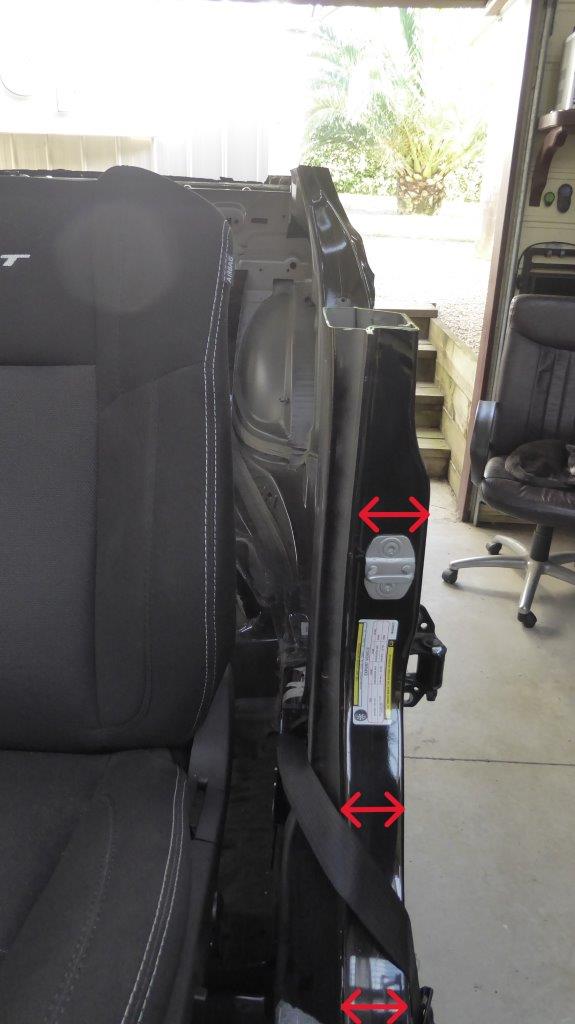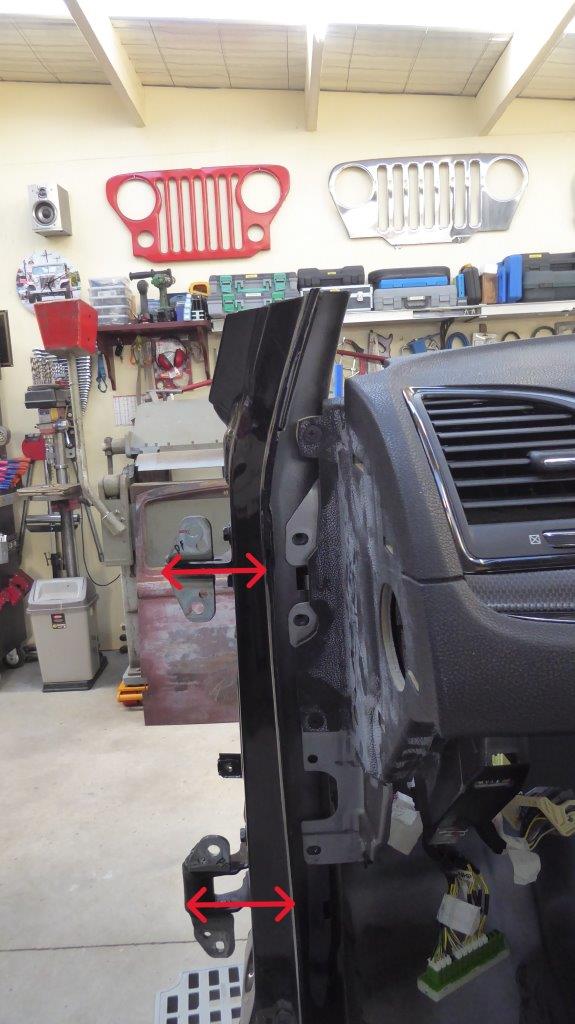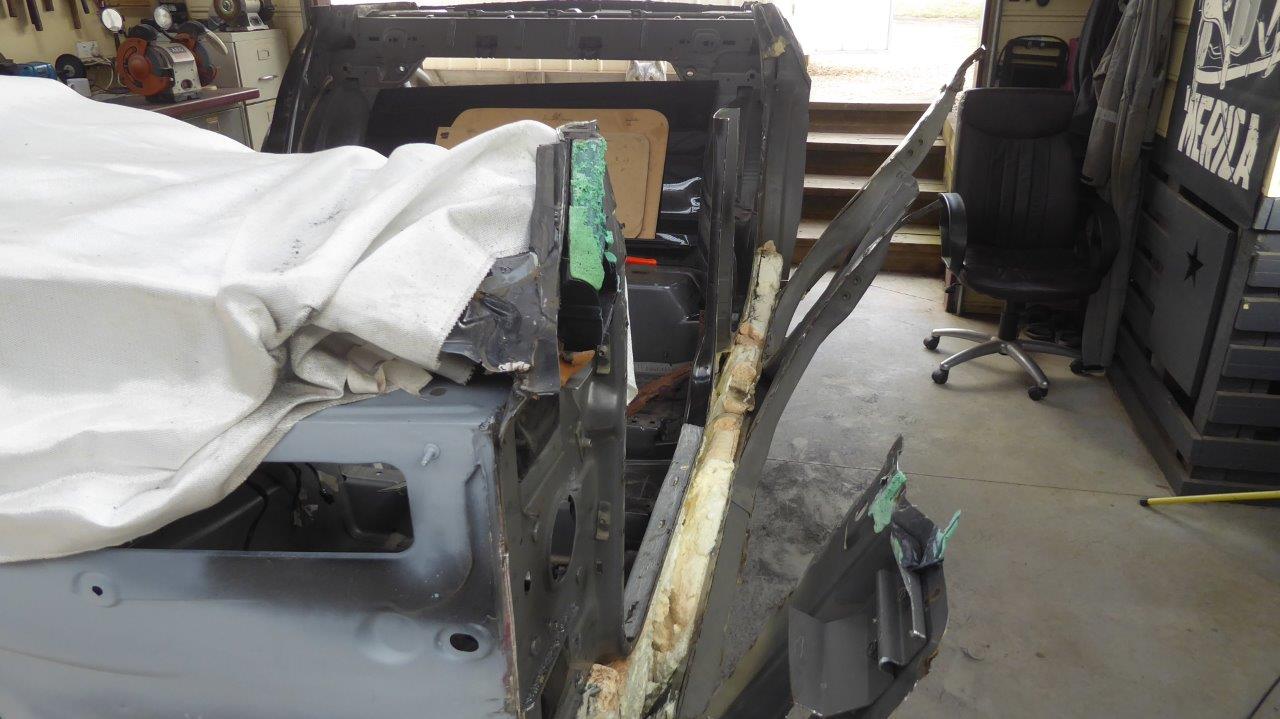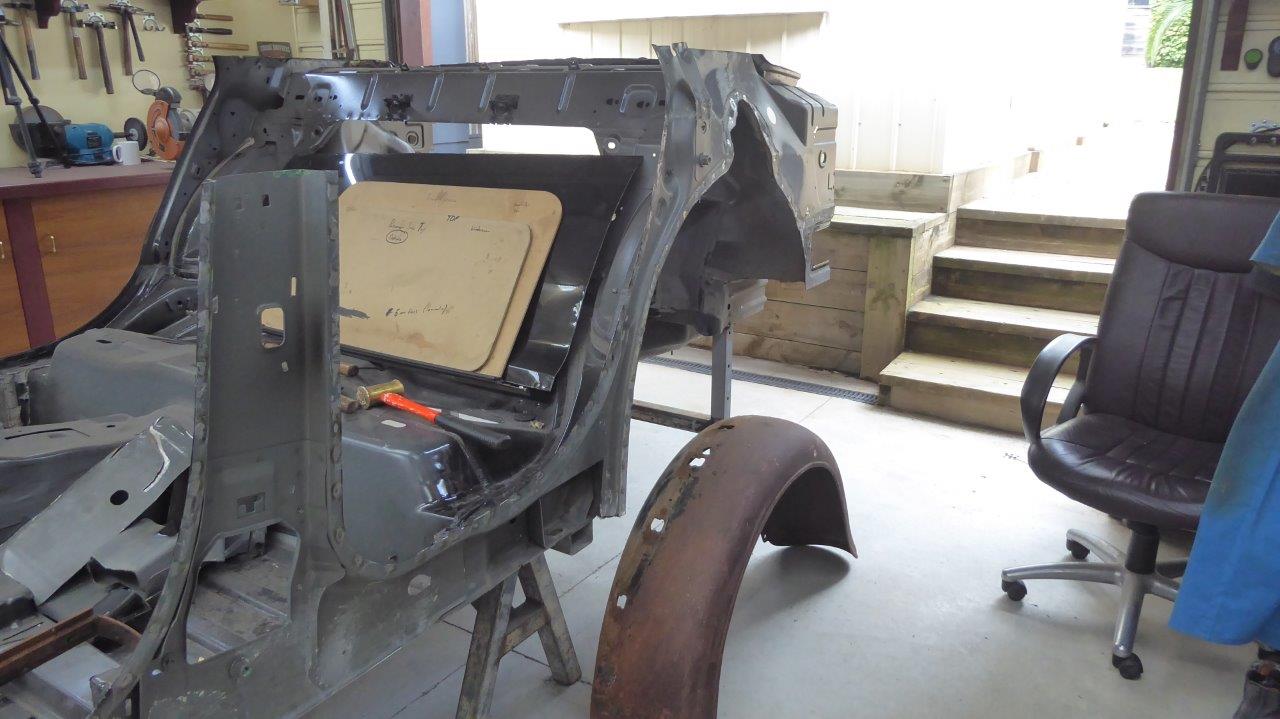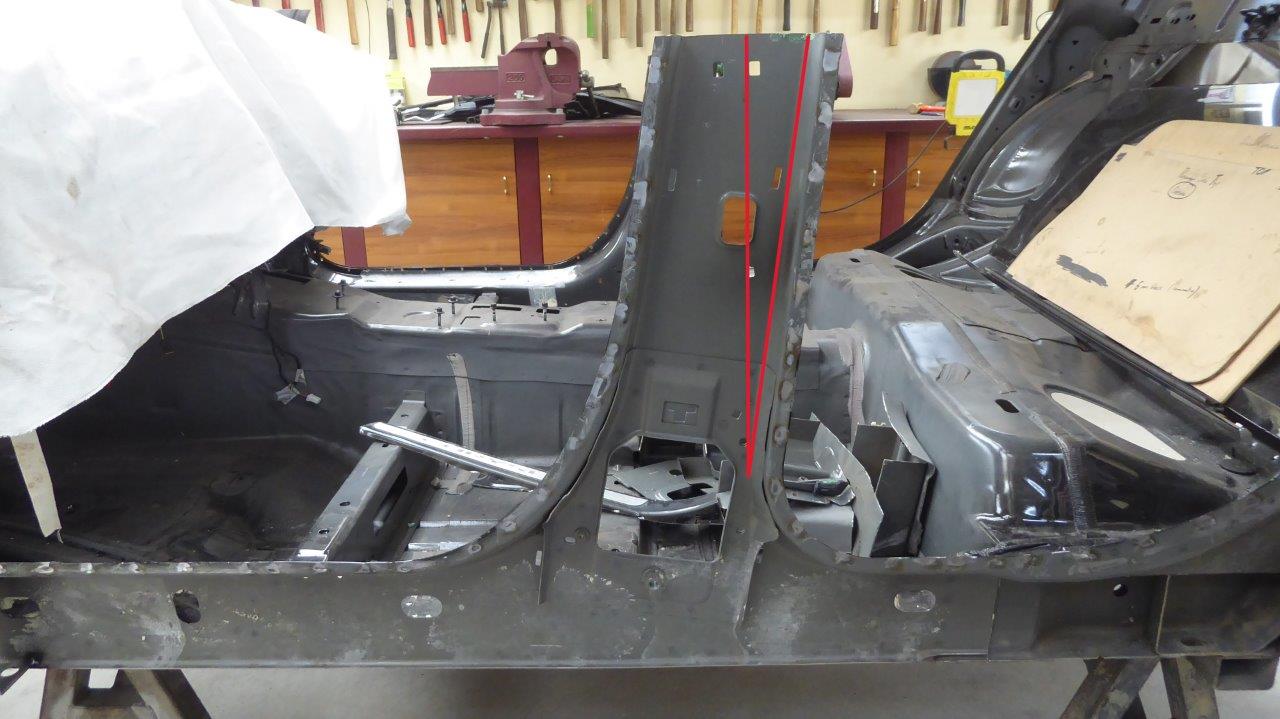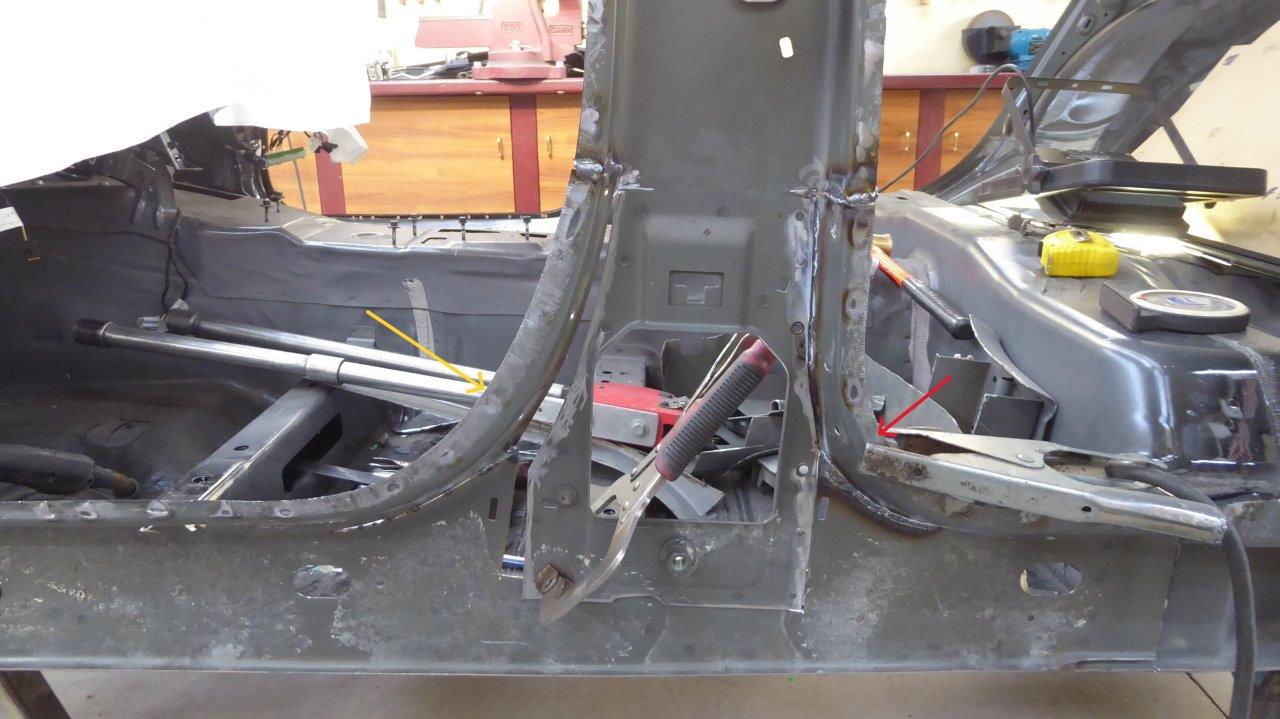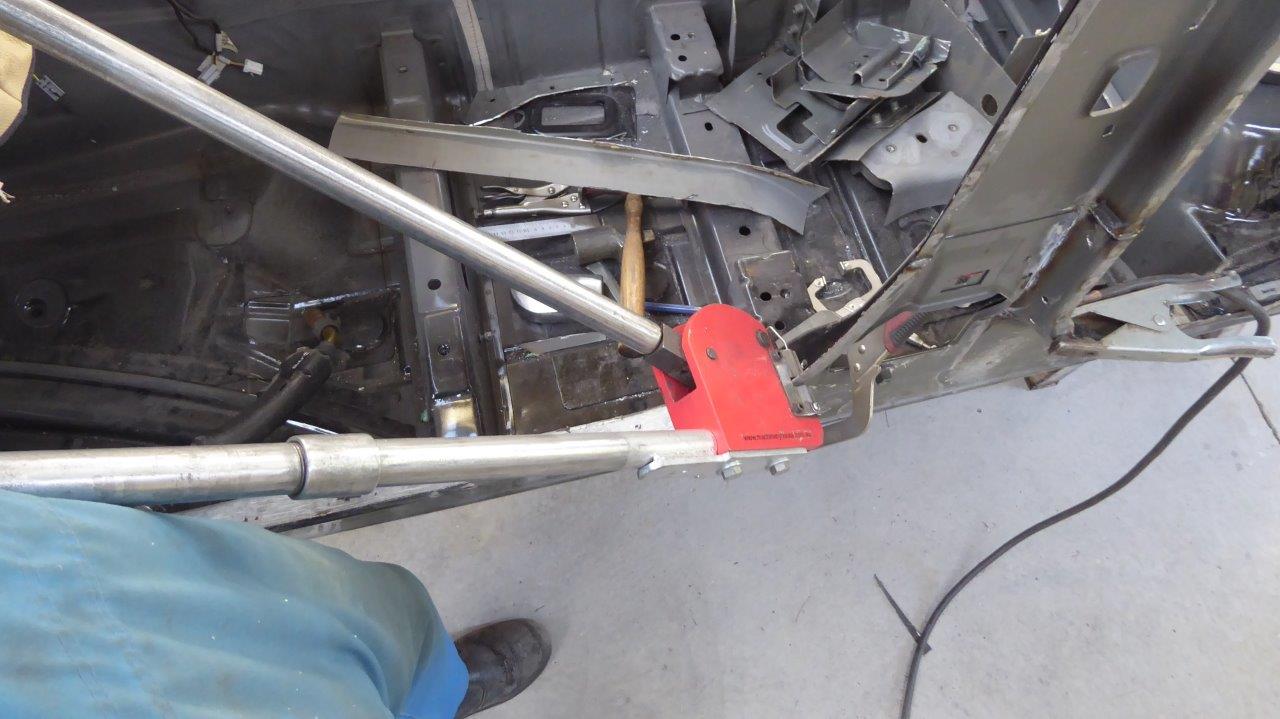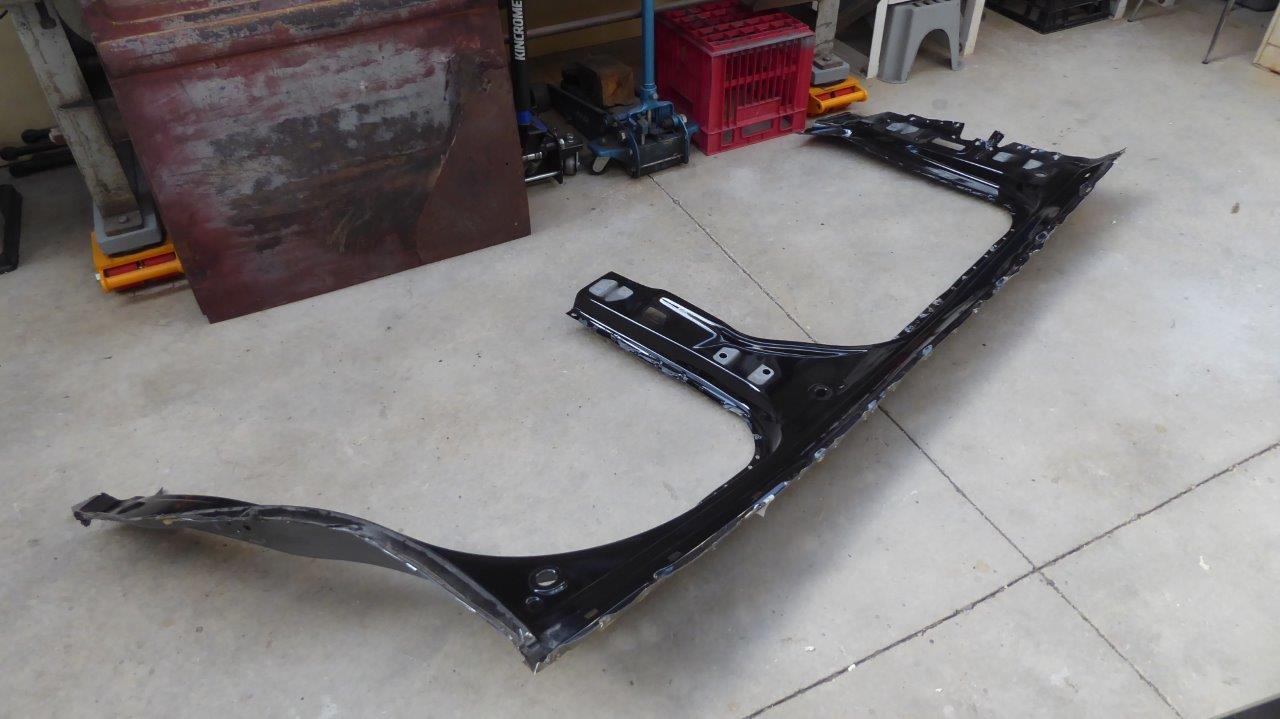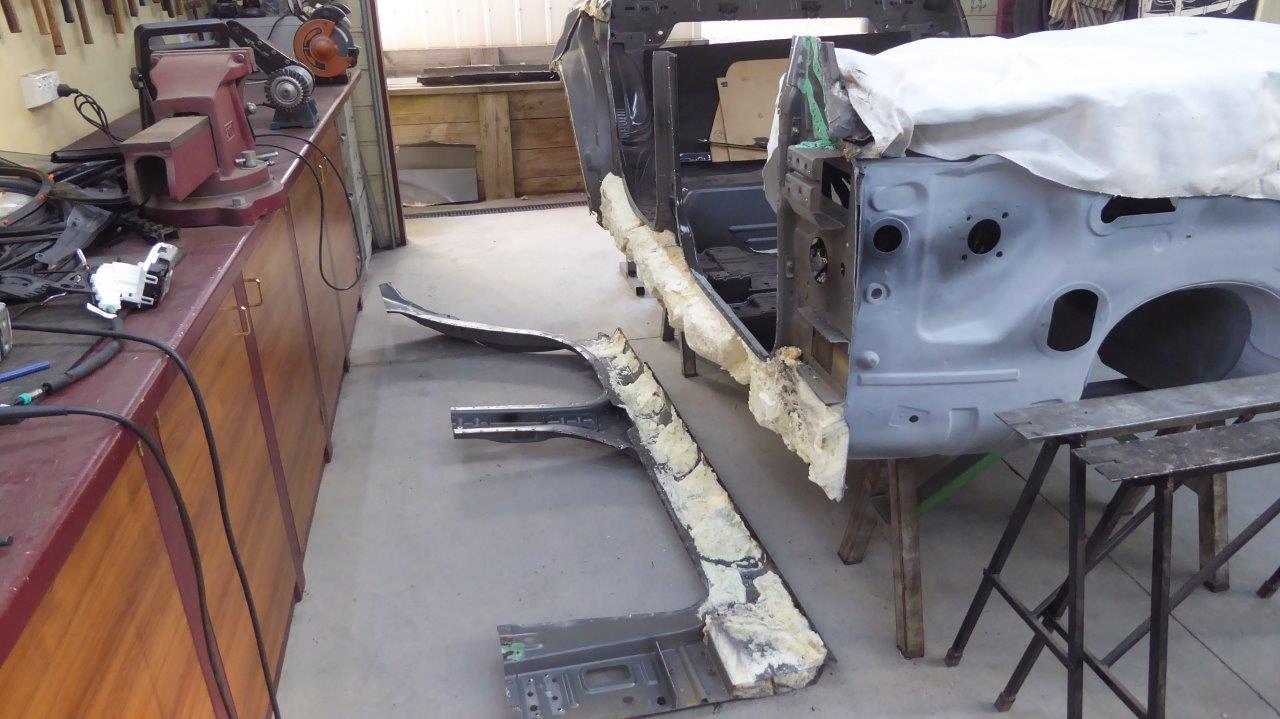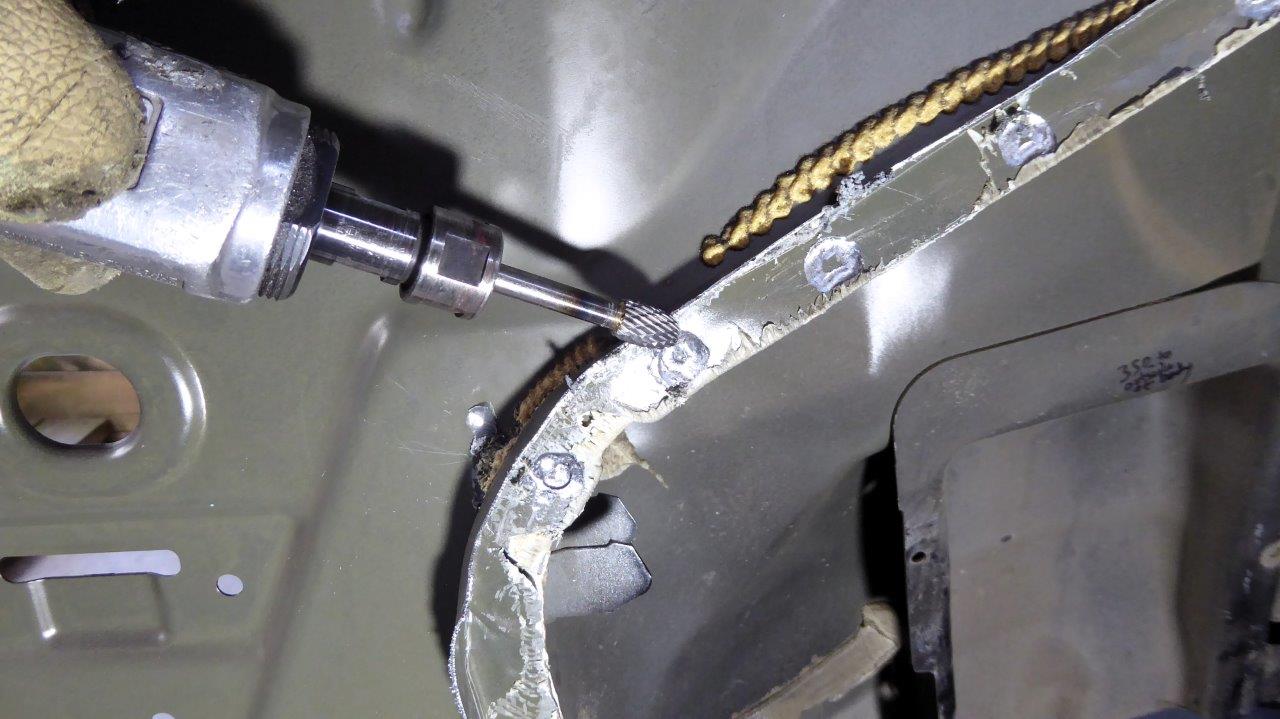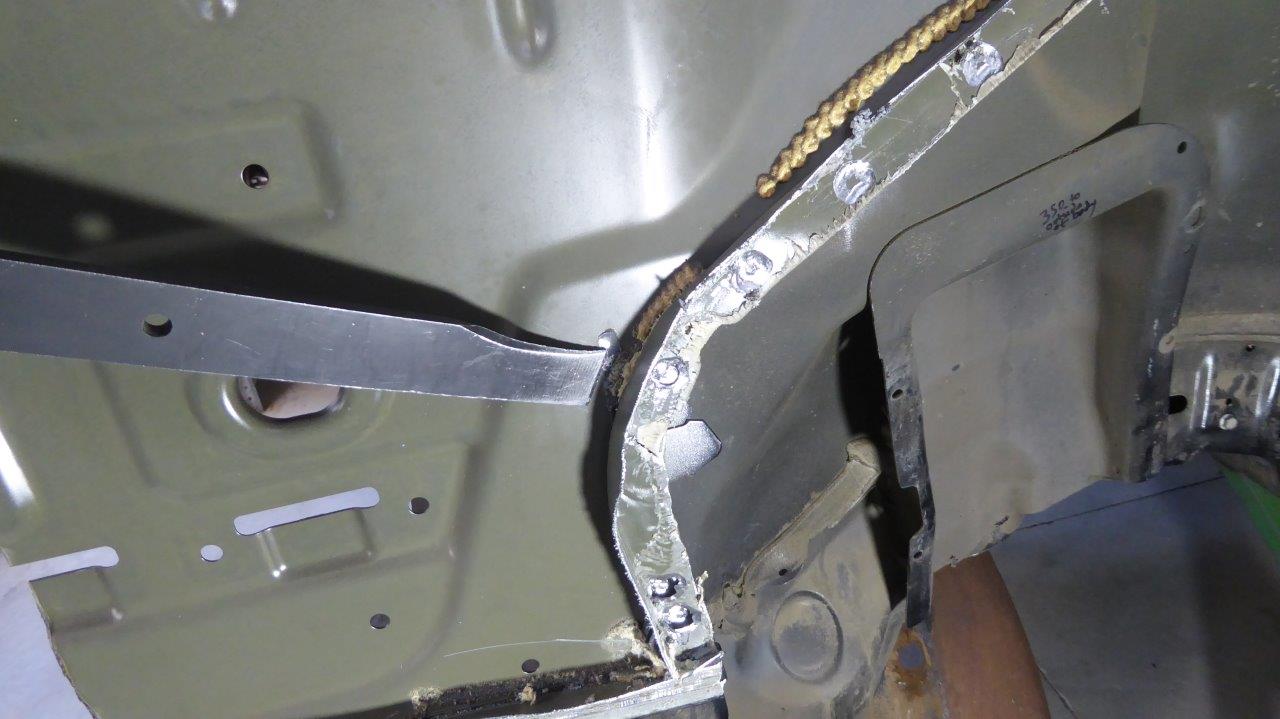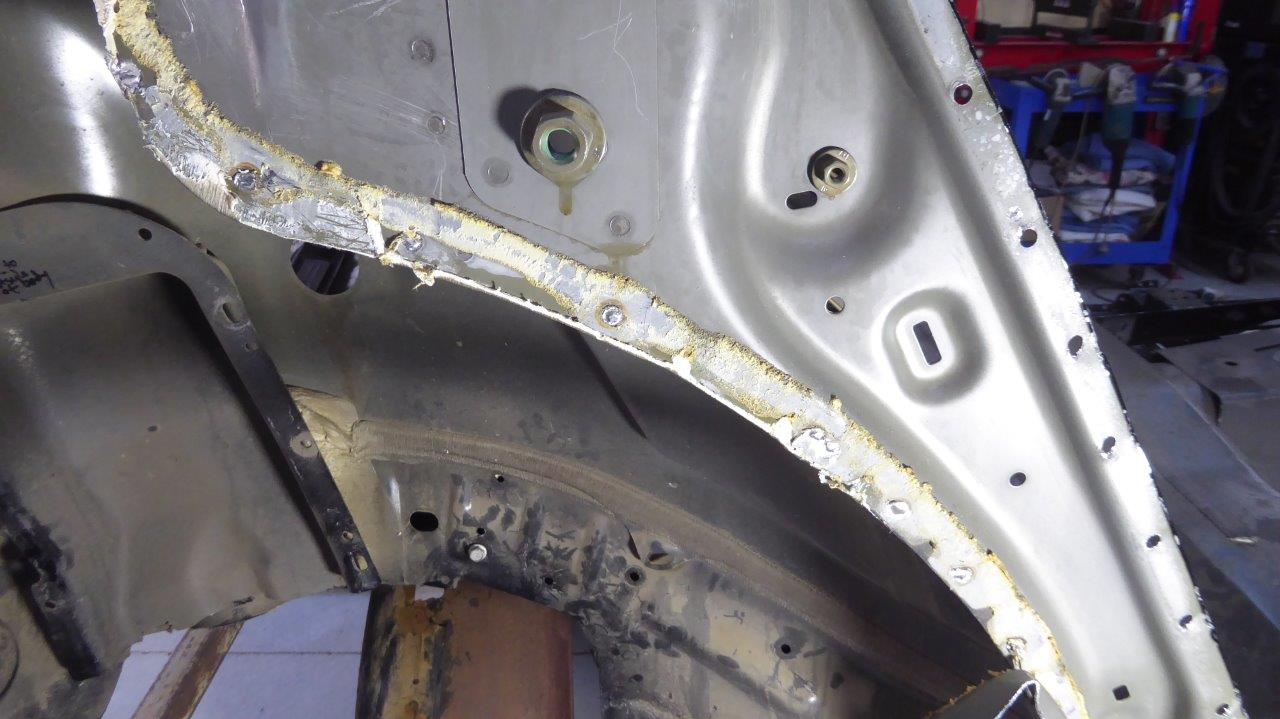Having determined that the doors can be closer inwards once narrowed, the outer part of the body has to come off. The arrows show how much is going to be removed from the pinch weld outwards.
Also on the A pillar just how far the donor doors metal inner frame sticks out from the side of the pinch weld.
So Elvira is having some major liposuction done to her waistline!
Everything was removed from the firewall all the way to behind the rear wheel arch. Even held up one of the Willys guards to see how it all looked.
One of the problems I face is how much the B pillars angle back from 90 degrees compared to the Willys doors. Just like the window tracks, this has to be angled forward to vertical, as leaning the window frame backwards at the B pillar was never done back then. A customising trick was to actually lean them forwards, so this would be a step in the wrong direction leaving them like this. I was hoping just to angle the top half behind the window frame vertically, but then the seat belt inertia reel mount would be at the wrong angle.
I cut straight through the pillar each side of the reel mount and down around the curved section. Then I used a potable stretcher on the back of the B pillar curved section, red arrow, and a shrinker on the forward curved section, yellow arrow, to rotate the pillar forward. You can see the gap in front of the lower reel mount of how much it had to move.
The shrinker is just one that is normally used on a stand and foot operated or with the provided upper handle. I have just made my own bolt on lower handle and a longer upper one to use it in-situ.
On to the other side. The part that is painted body colour actually really thin at only 0.8mm or 21 gauge and is only spot welded to the under lying piece around the perimeter and a few spots near the hinges.
The structural part is still fairly thin at 1.2mm or 18 gauge. They inject a ton of foam in there to keep road noise down!
Seeing I have so many spot welds to do I have been trying different ways to remove them. I didn't want holes left after removing what is left of the inner structure flange around the rear wheel arch area, so drilling right through with a cobalt drill bit was out. I often use a centre point drill, or recently, a spot weld cutter that is like a mini hole saw when I want to preserve the metal underneath. This time I tried my die grinder with a rotary burr of the shape shown. I just ran around the edge of the spot weld to just below the thickness of the spot weld centre. Not even all the way through the thickness of the flange.
Then hammered a weld splitter in between the two layers.
So long as it is ground thinner than the metal underneath, it pops right off not leaving any gouges at all. Just a bit of the spot weld centre which I just remove with a flap disc during the clean up. Little effort and quick too!

